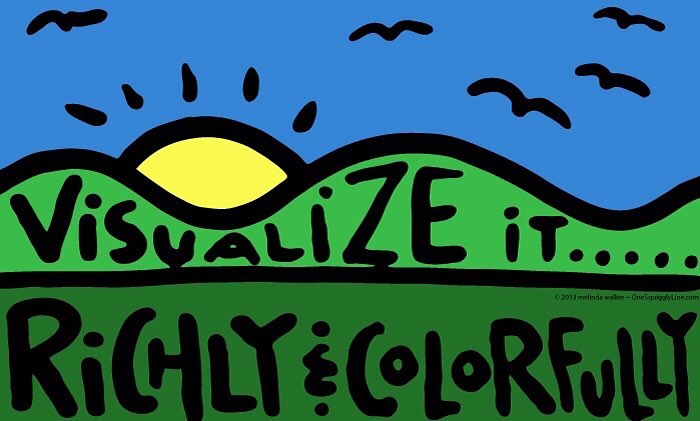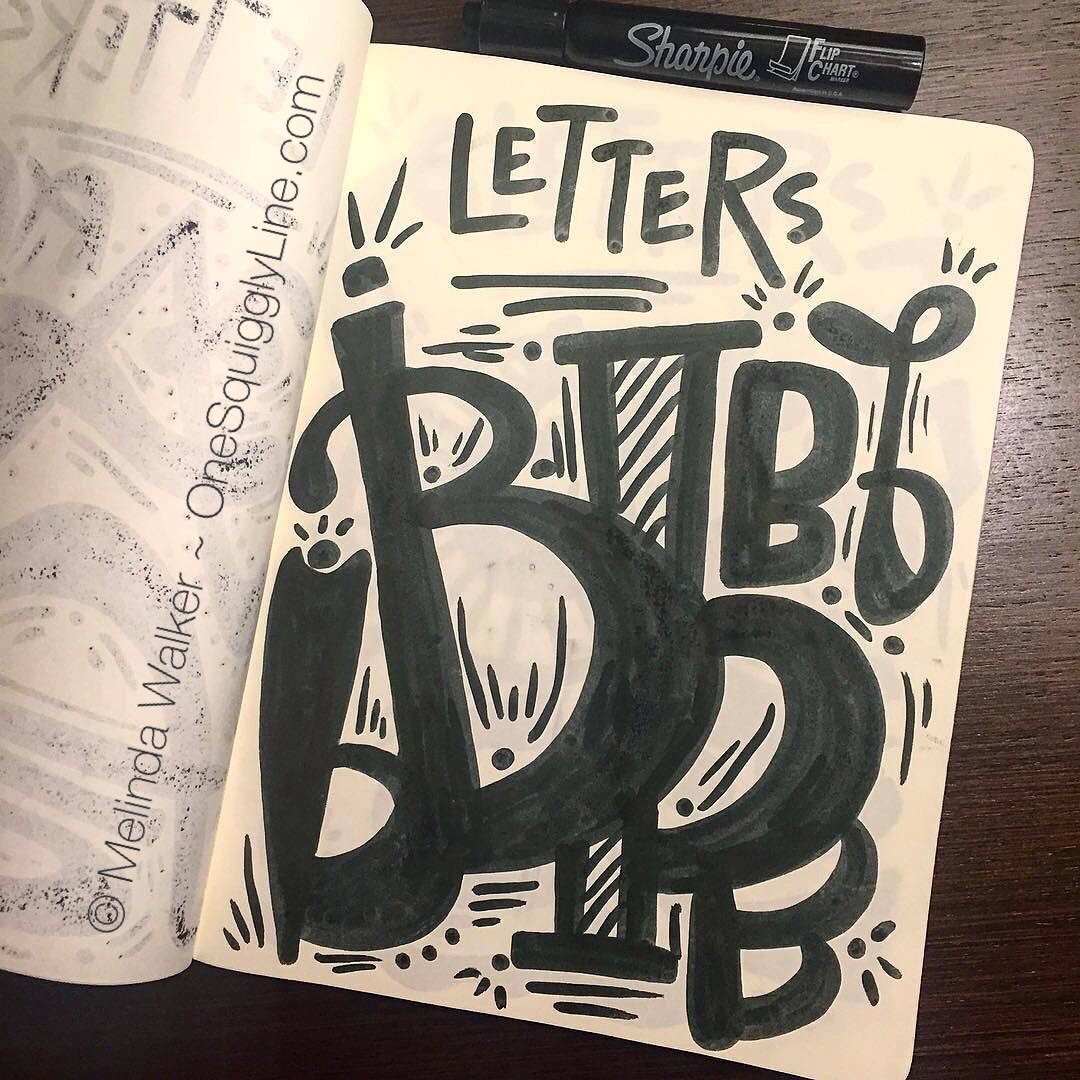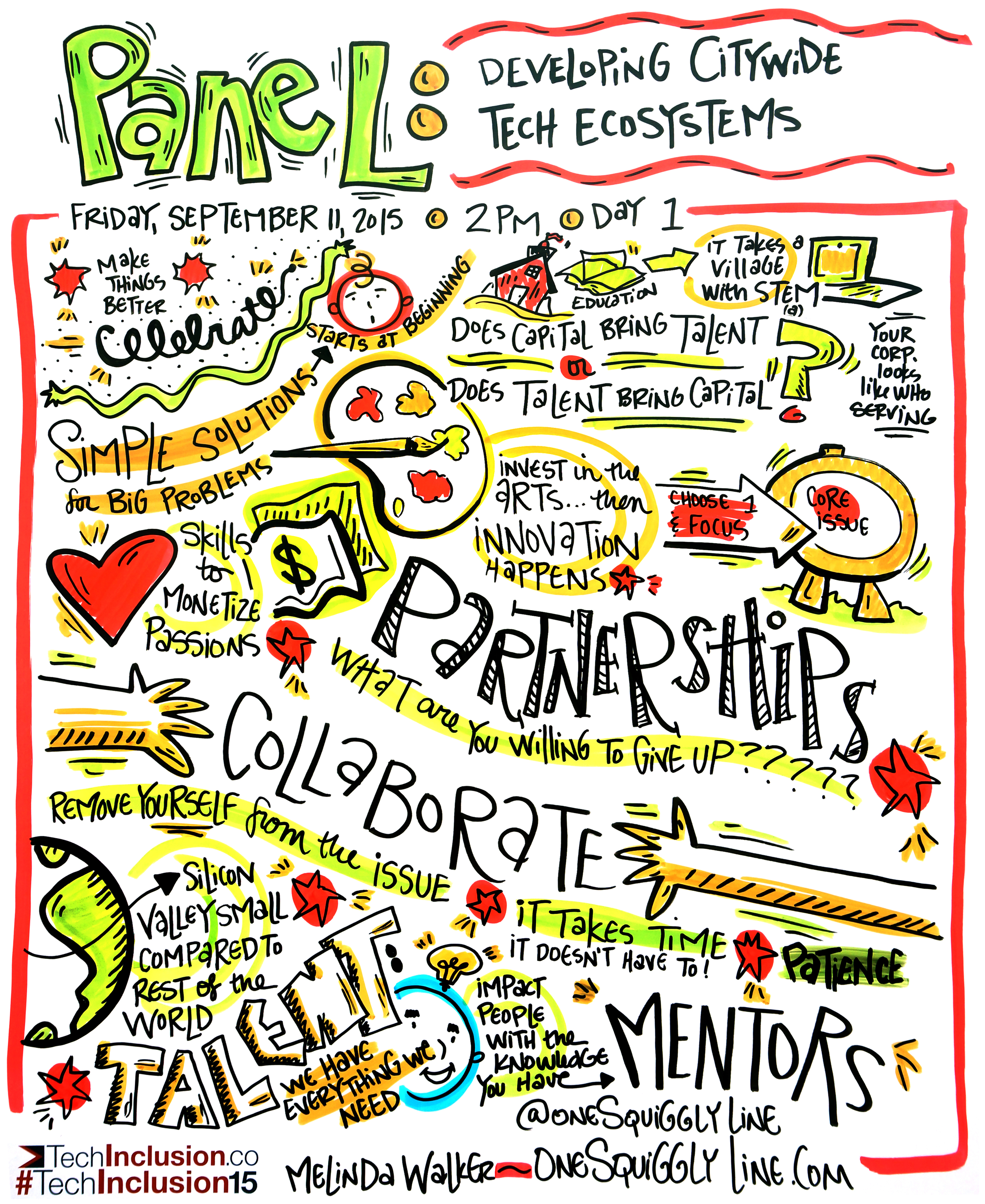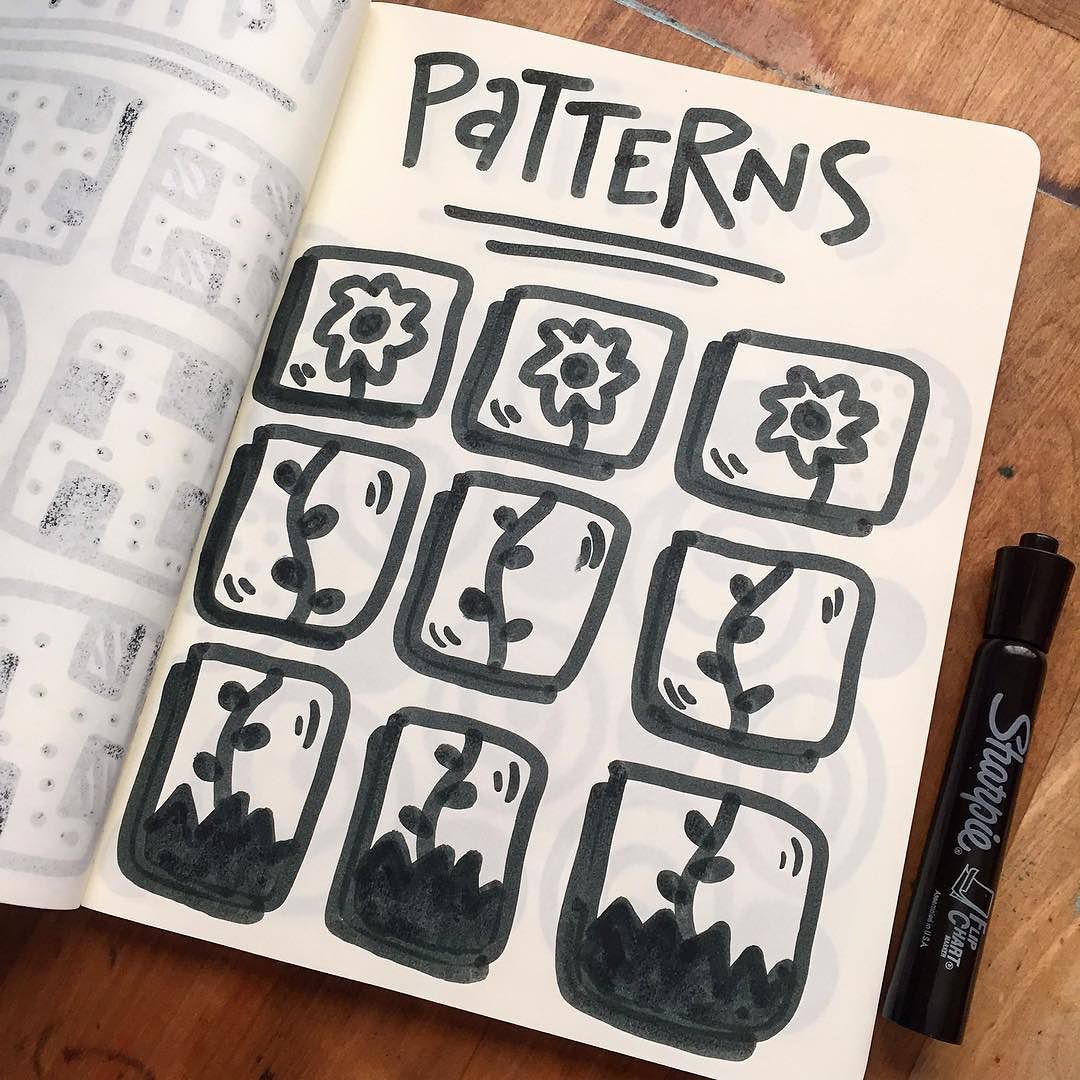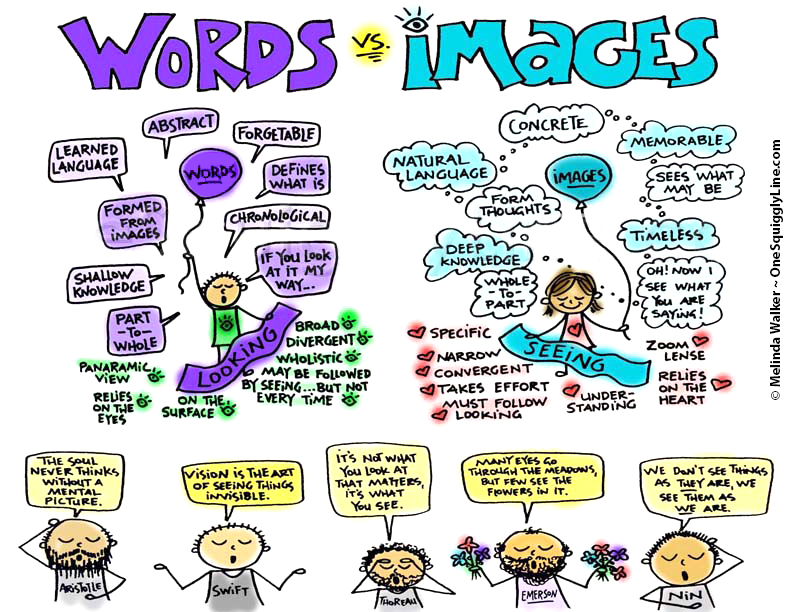Visualizing things richly and colorfully leads to more creative thinking. You probably visualize things more than you realize, without really thinking about it. So you already have some visual thinking skills. But how do you become better at visualizing things on purpose?
Try this:
Go to a hardware store or someplace that sells paint. First, pick a paint sample color card that matches your shirt. That's a warm-up, starting with something very concrete and right in front of you — your shirt.
Then, look for a paint sample color card that matches something at home. It could be a different shirt, a piece of furniture, your walls. Whatever you choose, you will need to picture it very clearly in your mind so you can "see" the color.
Paint sample cards are usually free, so you can take home the ones you think are the closest and see how well you did. The more you practice, the better you get!
Check out One Squiggly Line's About Visual Thinking page to learn more.
Visual Thinking: Visual Biography
Abstract ideas can be fascinating, but our brains really prefer things to be concrete. That way, it's much easier for the brain to make sense of them. And remember them.
A great way to make your own short bio more memorable and engaging is to make it visual! Mine is above. As you can see, the key facts are worked into my logo. That helps folks remember a bit about me when they look at my logo, wherever it is.
A visual biography can be much more powerful than a paragraph or two listing your accomplishments. So if you need to give a quick bio for a speaking engagement or whatever, make it visual!
Check out One Squiggly Line's About Visual Thinking page to learn more.
Visual Thinking & Creatvity: Make the common new
We look at letters every day. Online. Text messages. Street signs. Starbuck's coffee cups. Letters are everywhere.
When we see things all the time, we often stop really looking at them. Common things can become invisible.
When that happens, it's a great time to get creative with them. That causes you to look at things in a new way. Explore them from a bunch of different perspectives. Really look at them. See them in a new light. That's where a lot of new ideas are often found — sitting there right in front of us, in plain sight!
Visual Thinking & Visual Notes: Live Graphic Recording
People often think I do a lot of drawing while taking live visual notes. If you really look at the image above, you'll see there's really not much drawing there at all. Just some squares, a couple of circles, and an arrow. That's it!
When you write words inside simple shapes, those simple shapes start making your own notes a bit more visual. They become more dynamic. More interesting. The image and the message become more unified. And far more powerful.
A great way to make your own notes more visual is to write some of your words inside simple shapes — circles, squares, triangles, arrows, etc. Give it a try!
The image above is a close-up of a 4'x8' drawing, created live, in real-time during a Design Thinking workshop. Be sure to check out the entire image!
Visual Thinking & Creativity: Timelines
Pictures are obviously a big part of visual thinking. So are words. But if you just throw a bunch of words and pictures on a page, you just end up with a mess. A visual mess that makes your thinking messy, too.
That's where organization comes in. It's the third essential component of successful visuals. It doesn't have to be fancy. In fact, it's often best to keep things really simple.
A timeline is a simple and effective way to visually organize information.The image above shows a simple timeline of the International Center for Studies in Creativity, where I got my master's degree. Of course there's a whole lot more to their story than shown in this timeline, but it includes the things that influenced or impacted me in some way. You get the idea, at a glance.
Check out One Squiggly Line's About Visual Thinking page to learn more.
Visual Thinking & Creativity: World Creativity & Innovation Week
It's two months since World Creativity and Innovation Week. But why not celebrate it every month? On April 15-22 every year, people from around the world celebrate creativity and innovation by deliberately doing something creative every day. It could be something simple or something profound. It really doesn't matter — just be creative, whatever month it is!
Visual Thinking & Visual Notes: Live Graphic Recording at Events
There's never just one way to create visual notes, especially when they are created live. And at a large scale. That can make capturing a panel talk more of a challenge for some people. It takes a bit more flexibility than a clearly defined presentation.
I tend to capture panel discussions in a way that highlights the key points of the discussion as a whole. Not a series of summaries of what each person contributed. Since discussions tend to be rather fluid, the final visual makes much more sense that way. Speakers tend to like it better that way, too. So often key points build on what another speaker said, so there's no chance of misattribution when you capture the discussion as a whole.
The visual notes above were created during a panel discussion at TechInclusion last fall. You can see the whole set of visual notes created live, on-site there in this Flickr album.
Visual Thinking & Creativity: Think inside the box, too!
There's a myth out there that highly creative people just sit around and wait for inspiration to strike. Like a great big lightening bolt from the sky. Or a soft whisper from a mystical muse.
Truth is, creativity is not quite so passive. It is an active process. And there's a science to it, not just an art. There are even formulas, methods, and procedures for generating ideas and, equally importantly, evaluating them.
While there's often a push to "think outside the box" when generating ideas, thinking inside the box can be just as important. And productive. "The box" gives you a starting place, and sometimes getting started can be the hardest part.
So when looking for creative ideas, it's really ok to start with what you know, right where you are, with whatever you have right in front of you. Because once you start, you'll most likely keep going until that great idea hits you.
Visual Thinking & Live Visual Notes: Graphic Recording
When working live, you never know what's going to happen. I usually only have the same information the people in the audience have, which is a basic agenda. So I know the speaker's name, title of their talk, and how long they are scheduled to speak. That's it!
It's not uncommon for talks to go longer as planned, like the one above. That's usually a good sign, as it means the audience is really engaged. But it can be a challenge to capture all that extra content on the same page.
Color is a great way to keep things organized when there's not much space available. Grouping concepts and thoughts according to color allows you to have completely different ideas right next to each other without things getting confusing.
See more visual notes created live at One Squiggly Line's graphic recording page.
Visual Thinking: Words vs. Images
To many, the term visual thinking means pictures. Lots and lots of pictures. Maybe some charts and diagrams, too. And possibly a few mind maps thrown in for fun.
While pictures are a big part of visual thinking, words are also a big part. Words can be really powerful. Pictures can be very powerful. And when you put the two together, the message becomes even more powerful.
Check out the drawing above to see more specifically what's involved with both words and pictures.
Check out One Squiggly Line's About Visual Thinking page to learn more.

